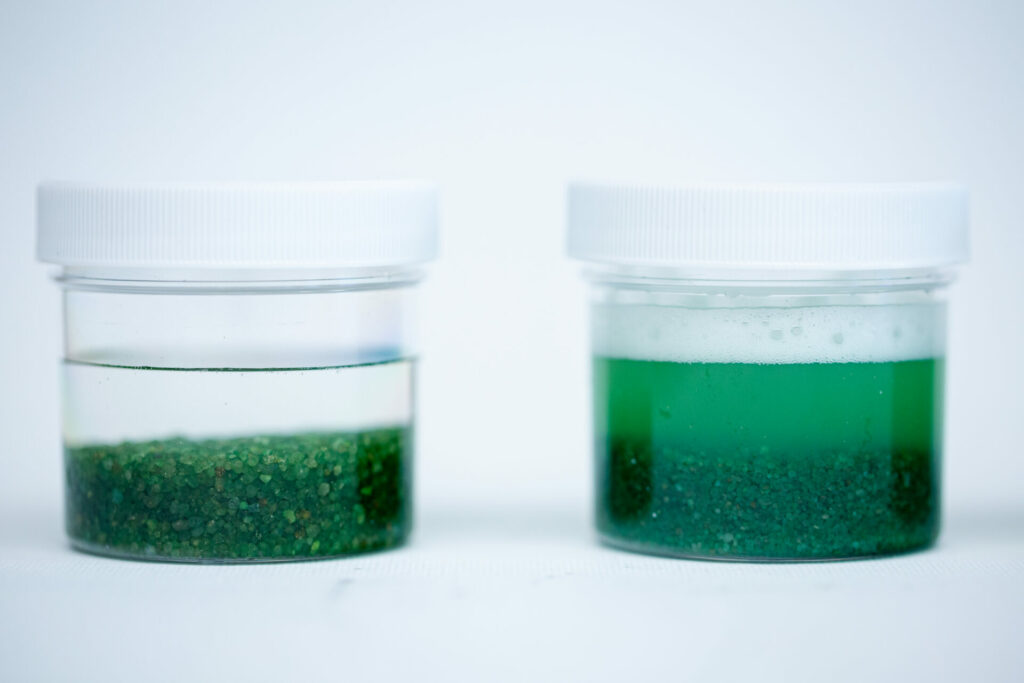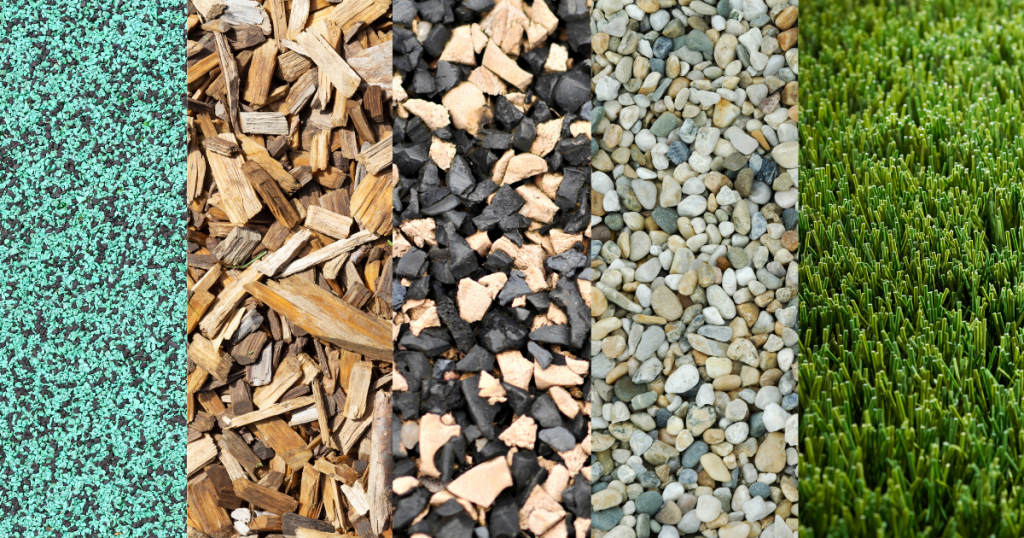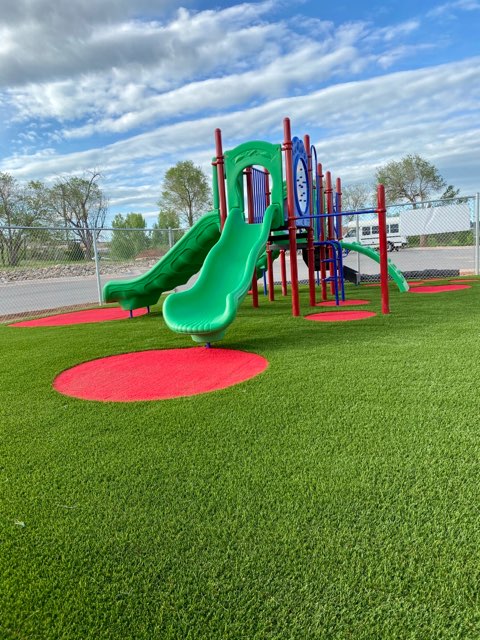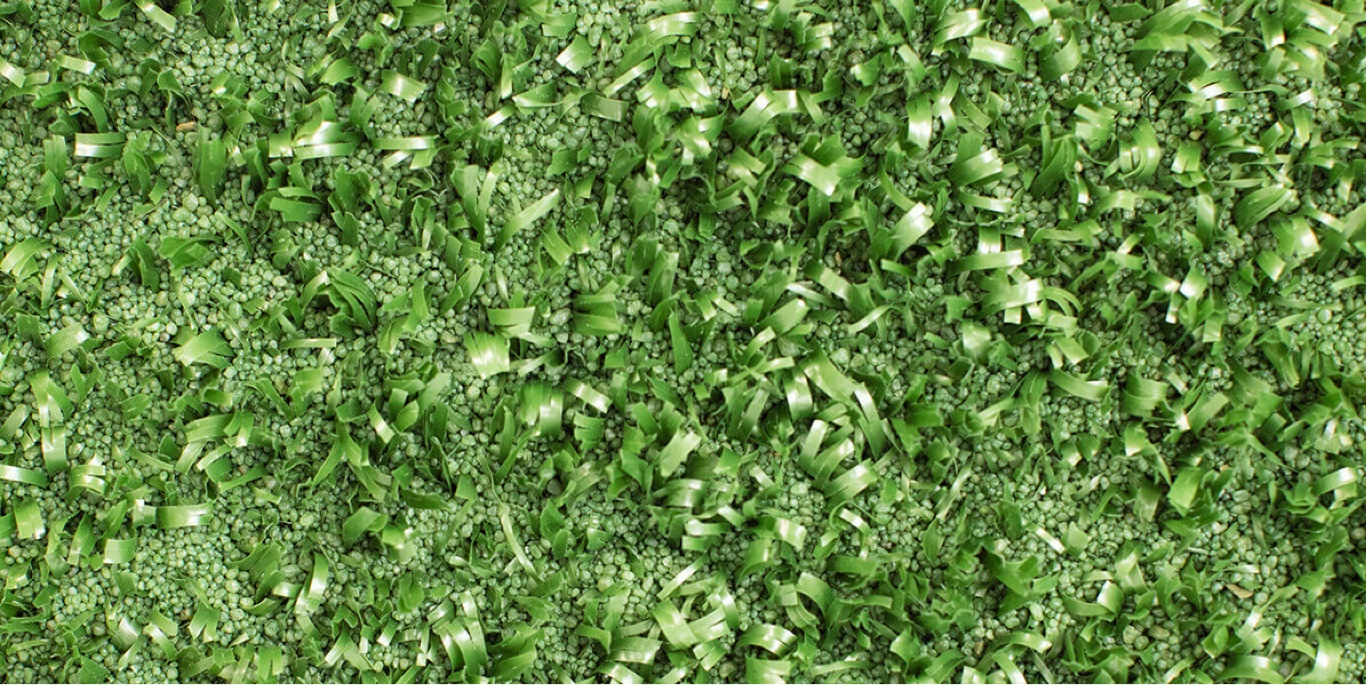
Infill Landscape Blog
Subscribe To Email Updates
Subscribe to our weekly newsletter and we’ll send updates straight to your inbox
Best Playground Surface Options: Pros and Cons
Does sorting through all the playground surface options available and figuring out the right one for your needs feel like a daunting task? Unsure where to start?
When researching the best playground surface options, there are three main things to keep in mind: safety, price, and maintenance.
Your playground will have unique needs, priorities, and constraints, so it’s best to do your research, ask questions, and fully understand your options. In this article we’ve, outlined the pros and cons of the most popular playground surfaces, including wooden and rubber mulch, artificial turf, and pour-in-place rubber.
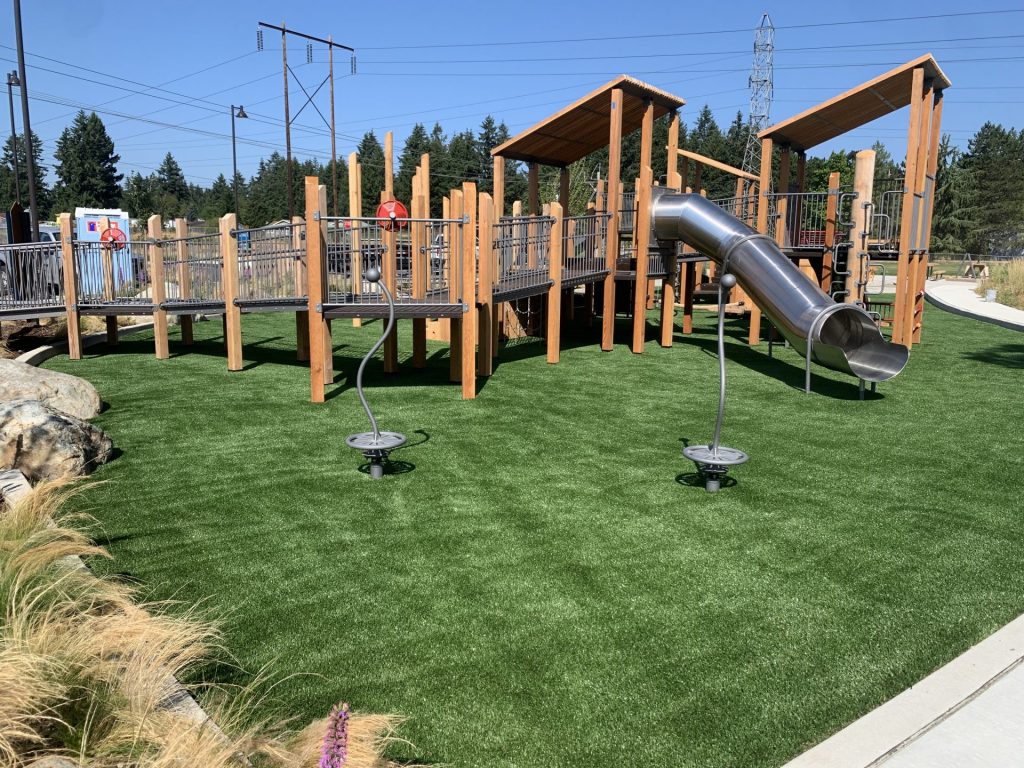
When comparing options, keep in mind that the depth of your playground surface will impact both safety and cost. In many cases, thicker playground surfaces are safer because they offer greater impact absorption. However, because more materials are used to create a thicker surface, they can also be more expensive.
Creating a safe and imaginative space for children to play is a wonderful endeavor — and we hope this post will bring greater clarity to your quest for the ideal playground surface.
Loose-Fill Surface Options
The following three options are all categorized as “loose-fill” surfaces. This means they’re composed of tiny, individual components like wood chips or pebbles, that are raked into place.
Wooden Mulch or Engineered Wood Fiber
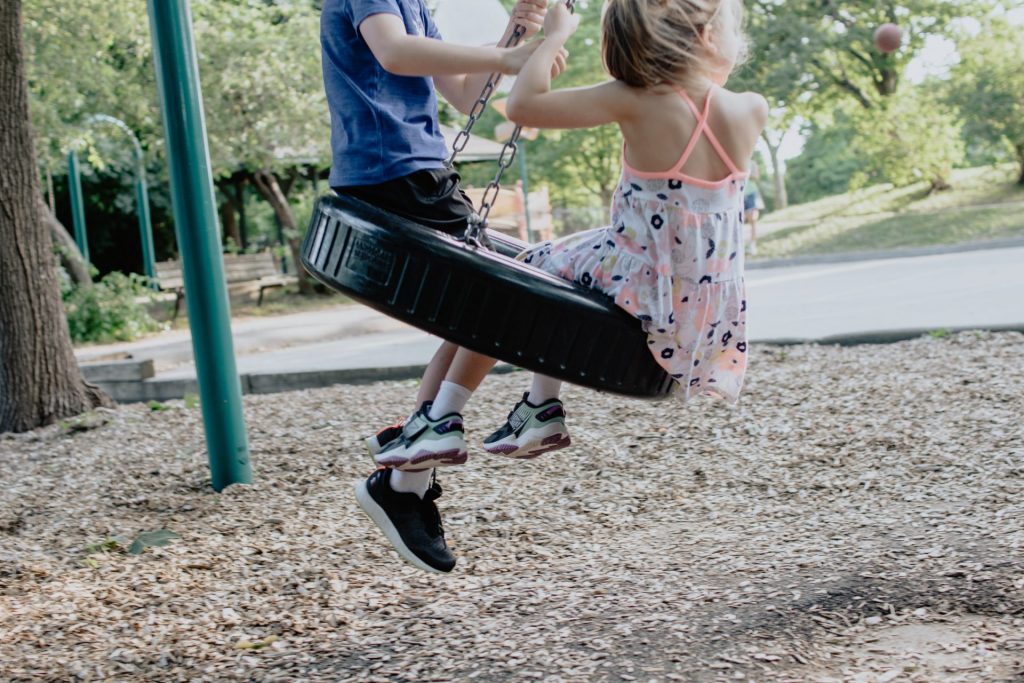
Pros: Wooden mulch is a popular choice, primarily because it’s inexpensive, widely available, and easy to install. If budget is your top concern and you need to prioritize keeping costs low, then this loose-fill surface option may be worth exploring. Mulch or Engineered Wood Fiber (EWF) is also a somewhat eco-friendly option because it’s made from a natural material and is biodegradable (although it can contribute to deforestation).
Public playgrounds cannot simply use any old mulch from a local garden center. Playgrounds designed for commercial or public use should only use IPEMA Certified EWF that meets the American Society for Testing and Materials (ASTM) F1292 standards for impact resistance and wheelchair accessibility.
Cons: Unfortunately, wooden mulch is considered fairly high maintenance. Your installation cost may be lower at the beginning, but over time you’ll need to spend more money to bring in fresh mulch and respread it.
Why the constant topping off? Because as children run and jump on the playground, certain high-use areas will start to spread thin. These high-use areas — like under swings and at the bottom of slides — are also where children are most likely to fall and get hurt. The thinner your mulch, the lower your safety rating. As a result, the safety of this surface is not very consistent, and it wanes over time if the surface is not actively maintained.
Rubber Mulch
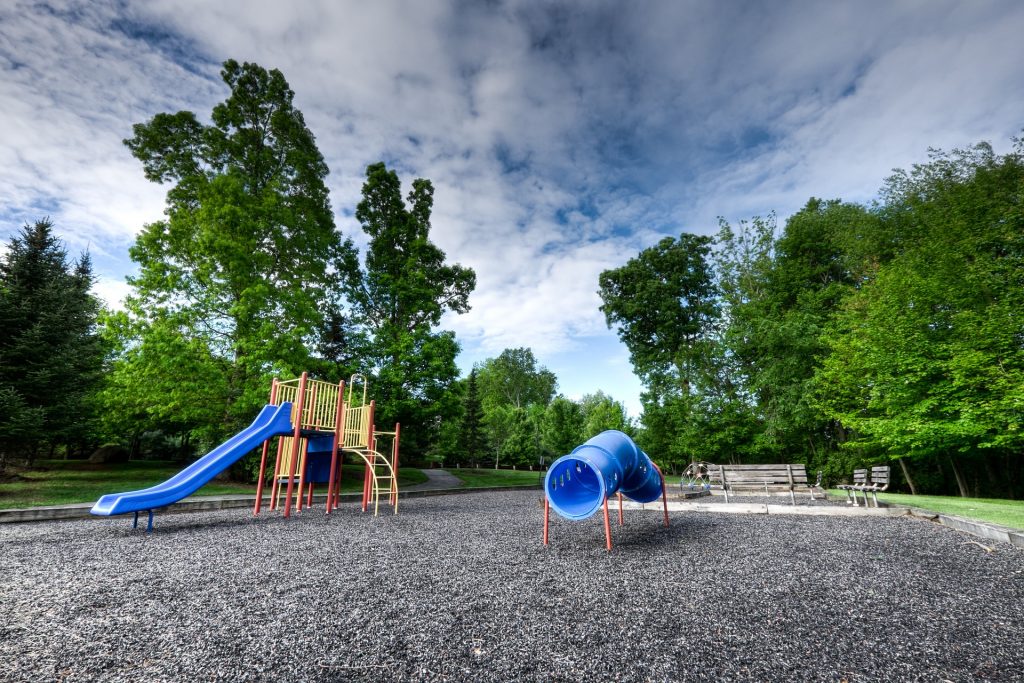
Pros: Like wooden mulch, loose-fill rubber mulch is another budget-friendly playground surface worth exploring for playground owners with financial restraints. It is slightly more expensive than wooden mulch because of installation and shipping options, but the cost is comparable. Rubber mulch is often 100% recycled, which is a great way to help keep used rubber out of landfills. It also comes in a wide variety of colors, sizes, and shapes.
Cons: Rubber mulch has many of the same downfalls as wooden mulch and EWF, primarily that it wears thin in high-use areas and will need to be topped off fairly often. For this reason, the safety of rubber mulch is not consistent and can wane with time if it’s not maintained properly.
Rubber mulch is also difficult to clean, unlike a pour-in-place surface that can easily be sprayed down. Also, rubber mulch, particularly recycled rubber mulch, may contain unwanted contaminants and chemicals that are increasingly released when exposed to heat and direct sunlight.
Pea Gravel
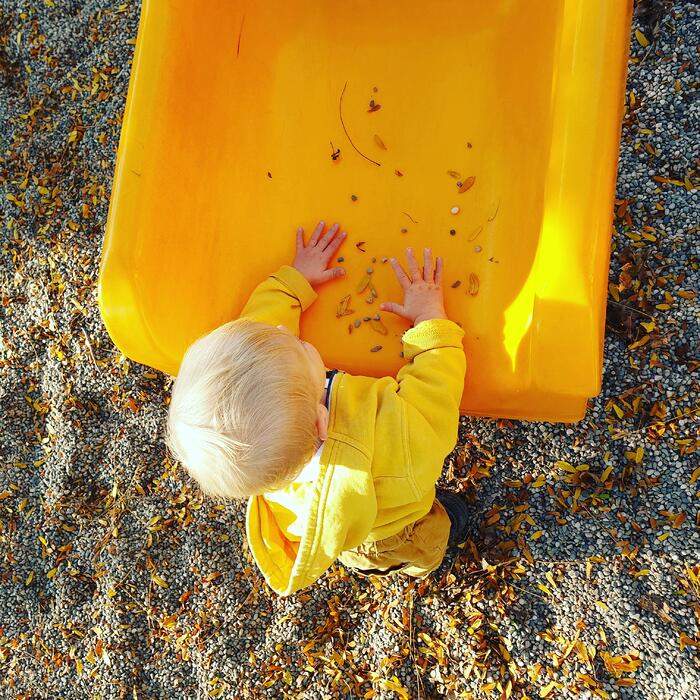
Pros: Pea gravel is another loose-fill option that some playground owners may consider because it’s inexpensive and widely available. It’s fairly easy to install and only requires prepping the site, dumping the gravel, and raking to the desired depth. Pea gravel is also a fairly eco-friendly option because it’s a natural material that does not introduce synthetic chemicals or dyes into the playground.
Cons: The largest downfall of pea gravel is that it’s not very safe. It does not meet basic safety standards for wheelchair accessibility, so it cannot be used for commercial or public playground spaces—only private playgrounds or backyards. Young children can also be tempted to put the small pebbles in their mouths, which is a choking hazard. Like all loose-fill options, sharp objects like broken glass could get lost in the gravel and cause unwanted accidents.
Pea gravel will thin with time, requiring regular maintenance and topping off every few years to remain effective. It’s also not available in many colors or sizes, so playground designers are often disappointed with their options.
Sand
Pros: Sand is another popular loose-fill option because it’s inexpensive, readily available, and easy to install. It also provides decent impact absorption when it’s properly installed.
Cons: Sand is high maintenance because it requires regular raking and topping off. It’s not ADA compliant or wheelchair accessible, and children are known to eat sand. This is especially alarming because a primary danger associated with playground sand is the possible presence of asbestos and silica. Silica can cause asthma and inflammation of the lungs, while asbestos fibers can cause cancer.
Synthetic Surface Options
Pour-In-Place
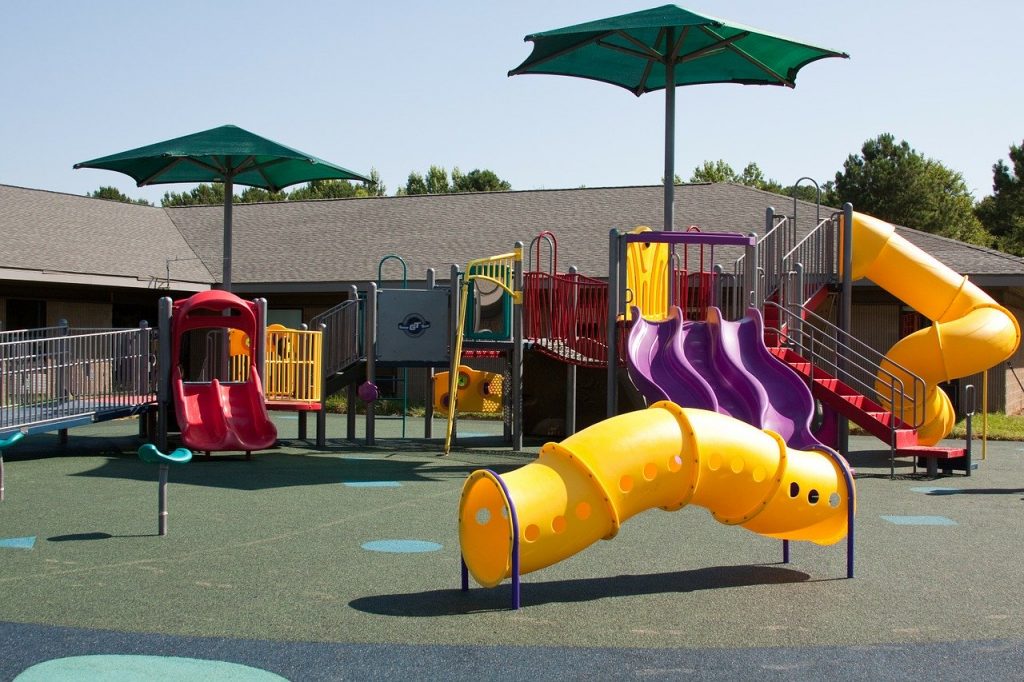
Pros: A pour-in-place synthetic surface is essentially a rubber mat that’s custom fit to your playground’s space and design aesthetic. This option provides optimum opportunities for creative design, and the color and pattern choices are nearly endless. A typical pour-in-place playground surface can be expected to last approximately 8-10 years.
Pour-in-place rubber surfaces are also one of the safest playground options on the market. They require very little maintenance since they do not contain individual pieces that thin and spread with time. As a single, flat mat, these surfaces are easier to clean than loose-fill surfaces, and they are ADA (Americans with Disabilities Act) compliant.
Cons: Pour-in-place surfaces are on the higher end of the price spectrum and will cost more than loose-fill options. They can also get stained with time if things like food or drinks are spilled on them. Because of the bright, synthetic nature of the material, pour-in-place playground surfaces are clearly man-made and will not blend in well with natural surroundings. The colors can also fade and chip with time.
If you’re interested in a pour-in-place surface but they’re outside your budget, then you may want to explore rubber tiles or bonded rubber surfaces. Both of these surfaces offer many (but not all) of the same benefit as pour-in-place.
Synthetic Turf
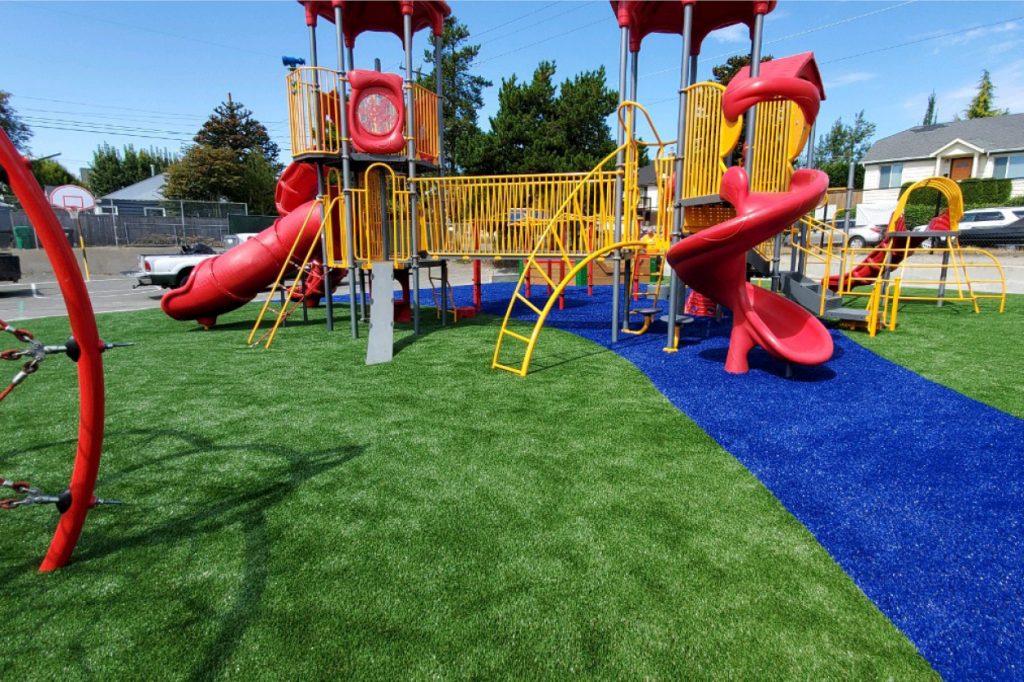
Pros: Synthetic turf has the longest lifespan of any playground surface options mentioned in this article and can be expected to last for approximately 12 years. The lifespan of synthetic turf is most impressive when paired with the right infill, like our non-toxic and allergen-free Envirofill or Safeshell.
Artificial turf offers a natural aesthetic that blends well with typical outdoor spaces and parks, and it’s known for being particularly low maintenance. Unlike loose-fill or pour-in-place options, synthetic turf will not thin with time, easily stain, or lose its color.
Synthetic turf is also one of the safest options on the market. When installed with the proper padding and infill, it meets ASTM safety standards and is ADA compliant.
Cons: Synthetic turf is more expensive than loose-fill options, and is comparable in price with a pour-in-place surface. However, because synthetic turf has a longer lifespan than pour-in-place, it has a better overall price given its lifespan.
How To Choose The Best Playground Surface?
The truth?
There is no one best playground surface, because each person has a different set of priorities.
But now that you understand the pros and cons of the options available, you can easily decide by considering how much each of the three most important factors — safety, price, and maintenance — matters to you.
If you’re like most of our clients, you may have specific questions about ensuring you’re building the safest playground. You can put your worries to rest, because our team has five Certified Playground Safety Inspector (CPSI) certified team members: we’re here to help ensure you end up with the safest playground surface possible.
Learn more about installing a synthetic turf playground here, and don’t hesitate to contact us with any questions you may have!
Similar Blogs
